Compound A(C7H13Br) is a tertiary bromide. On treatement with sodium ethoxide in ethanol. A is treatement to a hydrocarbon B. Ozonolysis of B followed up by work up with Zn−H2O gives 6-oxoheptanal as the only product The most likely structure of A is

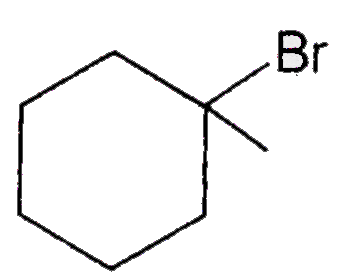

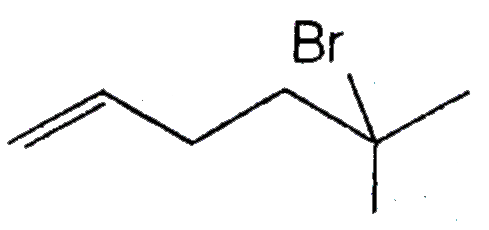
The correct Answer is:B
To solve the problem step by step, we will analyze the information given and deduce the structure of compound A (C7H13Br) based on the reactions described.
Step 1: Identify the structure of compound A
Given that compound A is a tertiary bromide with the formula C7H13Br, we know that it must have a carbon atom bonded to three other carbon atoms and one bromine atom. The general structure of a tertiary alkyl bromide can be represented as follows:
- A tertiary carbon (C) is bonded to three other carbon groups (R) and one bromine atom (Br).
Step 2: Reaction with sodium ethoxide
When compound A is treated with sodium ethoxide (C2H5ONa) in ethanol, it undergoes a dehydrohalogenation reaction. This reaction typically results in the formation of an alkene (hydrocarbon B) by eliminating hydrogen bromide (HBr).
Step 3: Determine the structure of hydrocarbon B
Since ozonolysis of hydrocarbon B leads to the formation of 6-oxoheptanal, we can deduce that hydrocarbon B must be a heptene (C7H14) with a double bond. The ozonolysis of an alkene typically cleaves the double bond and forms carbonyl compounds.
Step 4: Ozonolysis of B
The ozonolysis of hydrocarbon B followed by workup with Zn-H2O gives 6-oxoheptanal. The structure of 6-oxoheptanal can be represented as:
- A seven-carbon chain (heptanal) with a carbonyl group (C=O) at the sixth position.
Step 5: Constructing the structure of B
To generate 6-oxoheptanal from ozonolysis, hydrocarbon B must have a double bond between the 5th and 6th carbons. Therefore, the structure of B can be represented as follows:
- A double bond between C5 and C6 in a straight-chain heptene.
Step 6: Finalizing the structure of A
To determine the structure of compound A, we need to consider how we can form hydrocarbon B (C7H14) from a tertiary bromide (C7H13Br). The most likely structure of A would be a tertiary bromide that can lead to the formation of the required alkene.
The structure of A can be represented as:
- A tertiary bromide with a bromine atom on the carbon that is bonded to three other carbons.
Conclusion
The most likely structure of compound A (C7H13Br) is 2-bromo-2-methylhexane.
Given that compound A is a tertiary bromide with the formula C7H13Br, we know that it must have a carbon atom bonded to three other carbon atoms and one bromine atom. The general structure of a tertiary alkyl bromide can be represented as follows:
When compound A is treated with sodium ethoxide (C2H5ONa) in ethanol, it undergoes a dehydrohalogenation reaction. This reaction typically results in the formation of an alkene (hydrocarbon B) by eliminating hydrogen bromide (HBr).
Since ozonolysis of hydrocarbon B leads to the formation of 6-oxoheptanal, we can deduce that hydrocarbon B must be a heptene (C7H14) with a double bond. The ozonolysis of an alkene typically cleaves the double bond and forms carbonyl compounds.
The ozonolysis of hydrocarbon B followed by workup with Zn-H2O gives 6-oxoheptanal. The structure of 6-oxoheptanal can be represented as:
To generate 6-oxoheptanal from ozonolysis, hydrocarbon B must have a double bond between the 5th and 6th carbons. Therefore, the structure of B can be represented as follows:
To determine the structure of compound A, we need to consider how we can form hydrocarbon B (C7H14) from a tertiary bromide (C7H13Br). The most likely structure of A would be a tertiary bromide that can lead to the formation of the required alkene.
- A tertiary bromide with a bromine atom on the carbon that is bonded to three other carbons.
The most likely structure of compound A (C7H13Br) is 2-bromo-2-methylhexane.
Topper's Solved these Questions
- BOOK - IIT-JEE PREVIOUS YEAR (CHEMISTRY)CHAPTER - ALDEHYDES AND KETONESEXERCISE - Integer Answere Type Questions1videos
ALDEHYDES AND KETONES
- BOOK - IIT-JEE PREVIOUS YEAR (CHEMISTRY)CHAPTER - ALCOHOLS AND ETHERSEXERCISE - Test5videos
ALCOHOLS AND ETHERS
- BOOK - IIT-JEE PREVIOUS YEAR (CHEMISTRY)CHAPTER - ALIPHATIC COMPOUNDS CONTAINING NITROGENEXERCISE - chpter test1videos
ALIPHATIC COMPOUNDS CONTAINING NITROGEN
Similar Questions
An alkyl bromide A has molecular formula C8H17Br and four different structures can be drawn for it, all optically active. A on refluxing with ethanolic KOH solution yields only one elirnination product B(C8H16) which it still enantiomeric. B on treatment with H2/Pt yields C(C8H18) which does not rotate the plane polarized light, B on ozonolysis followed by work-up with H2O2 yields D(C7H14O) as one product which it still resolvable. Deduce structures of A to D.
View SolutionAn organic compound with molecular formula C6H12 upon ozonolysis gives only acetone as the product. The compound is :
View Solution
Knowledge Check
- Question 1 - Select One
CH3CO2C2H5 on reaction with sodium ethoxide in ethanol gives A, which on heating in the presence of acid gives B compound B is
ACH3COCH2COOHBCH3COCH3C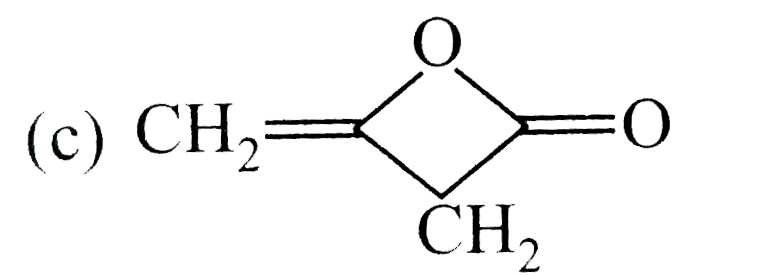 D
D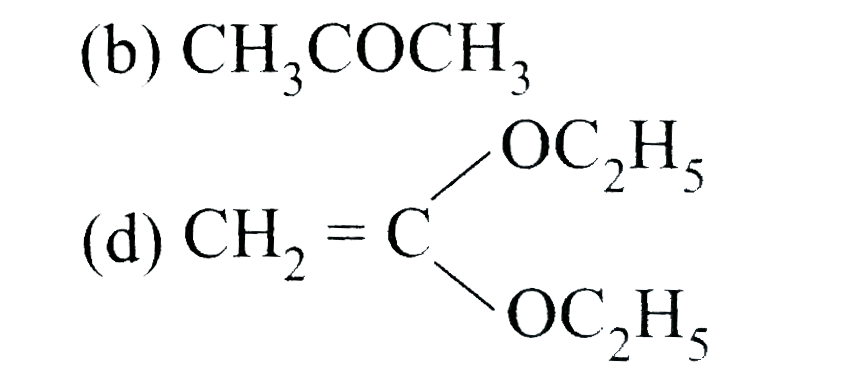
- Question 2 - Select One
Refer to Question. When the compound (B) on ozonolysis is followed by oxidation with H2O2, the products are :
A B
B C
C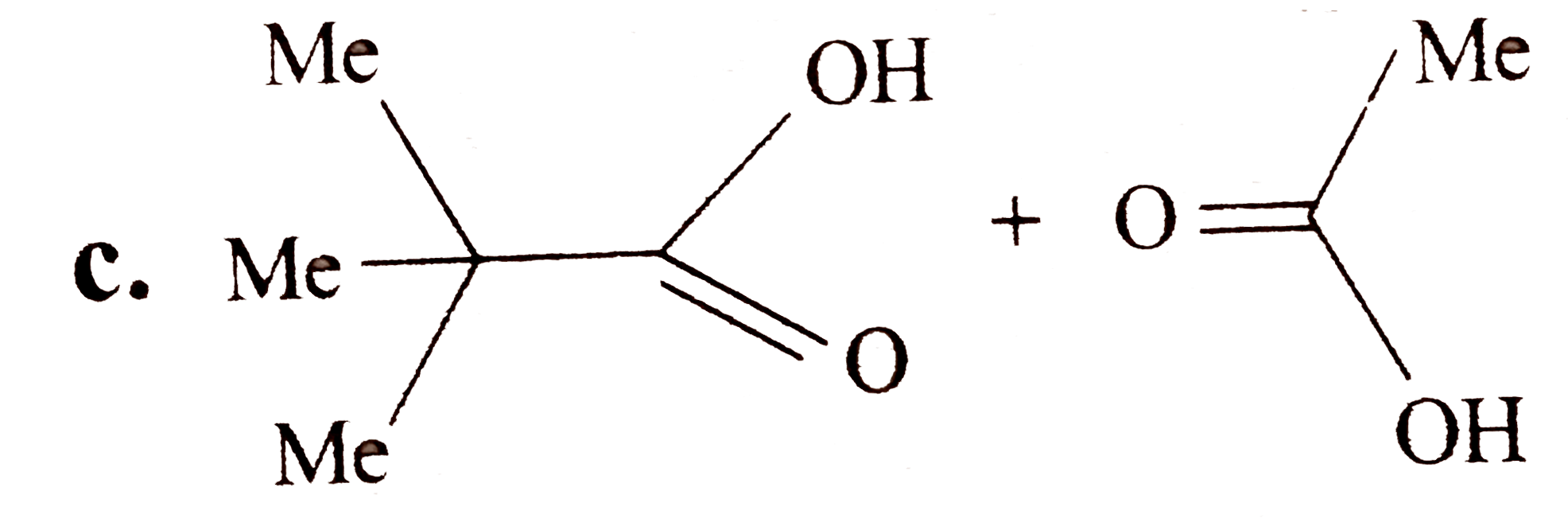 D
D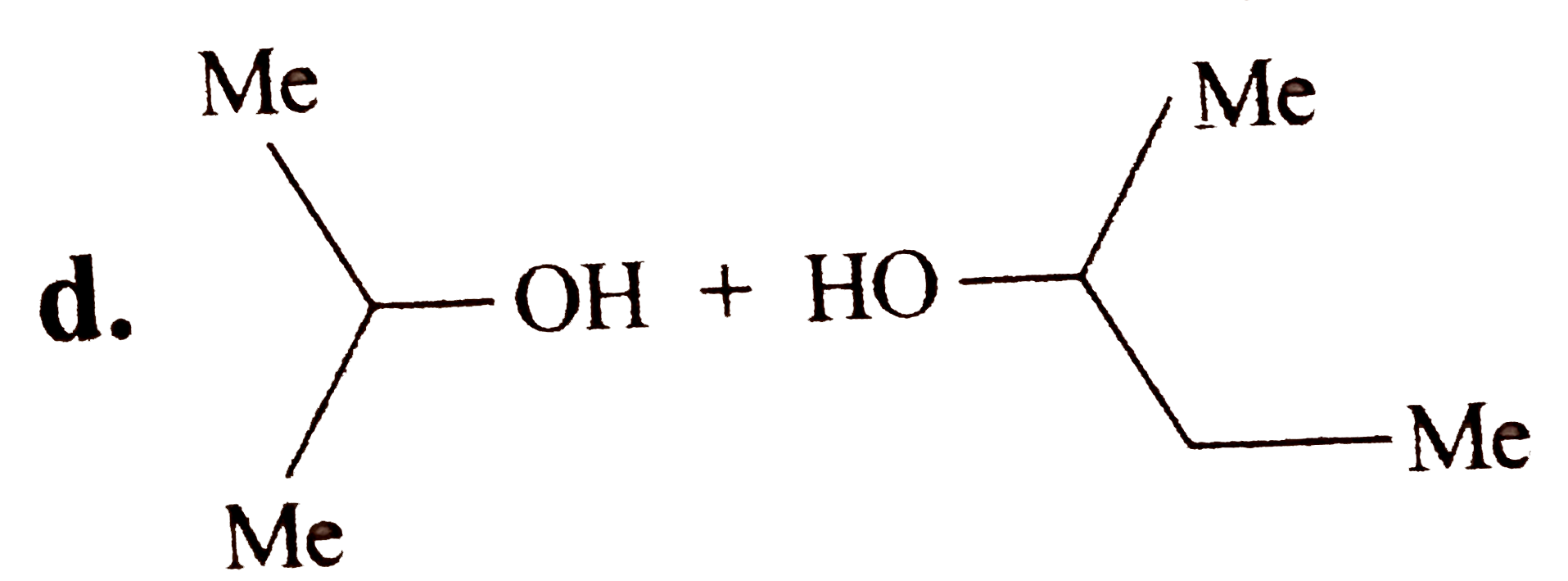
- Question 3 - Select One or More
The compound X (C4H11N) on treatement with nitrous acid gives a tertiary alcohol (C4H10O). The compound X must also respond to
AMustard oil reactionBLibermann nitroso reactionCBeckmann rearrangementDCarbylamine reaction.
On ozonolysis a hydrocarbon of molecular formula C4H6 gives succinin acid only. What is the structure of hydrocarbon ?
View SolutionAn organic compound A (C9H10O) does not evolve any gas on reatement with Na-metal but on hydrolysis with dil. H2SO4 gives B(C9H12O2) which on further treatement with alkaline solution of iodine gives an yellow precipitate. Also A on treatment with excess of conc. HBr gives C(C9(H11OBr) as the major product. C on further treatment with C2H5ONa/C2H5OH followed by acidification of product gives D (an isomer of A). D on ozonolysis followed by work-up with dimethyl sulphide gives ortho hydroxyl benzaldehyde as one of the product. Answer the following three questions based on the above information.
The most likely structure of starting compound A isView SolutionAn organic compound A (C9H10O) does not evolve any gas on reatement with Na-metal but on hydrolysis with dil. H2SO4 gives B(C9H12O2) which on further treatement with alkaline solution of iodine gives an yellow precipitate. Also A on treatment with excess of conc. HBr gives C(C9(H11OBr) as the major product. C on further treatment with C2H5ONa/C2H5OH followed by acidification of product gives D (an isomer of A). D on ozonolysis followed by work-up with dimethyl sulphide gives ortho hydroxyl benzaldehyde as one of the product. Answer the following three questions based on the above information.
Which of the following statement regarding B is correct?View SolutionAn organic compound A (C9H10O) does not evolve any gas on reatement with Na-metal but on hydrolysis with dil. H2SO4 gives B(C9H12O2) which on further treatement with alkaline solution of iodine gives an yellow precipitate. Also A on treatment with excess of conc. HBr gives C(C9(H11OBr) as the major product. C on further treatment with C2H5ONa/C2H5OH followed by acidification of product gives D (an isomer of A). D on ozonolysis followed by work-up with dimethyl sulphide gives ortho hydroxyl benzaldehyde as one of the product. Answer the following three questions based on the above information.
The statement that is true regarding A to D isView SolutionCompound (A)(C13H24O) is a sex − attractant pheromone two molar equivalents of H2 and is converted to 3−ethyl−7−methyl decan −1−ol. On reductive ozonolysis, it gives the following compounds.

(A) shows two structural isomers, one structure is :

The other structure (A2) is :View Solution

